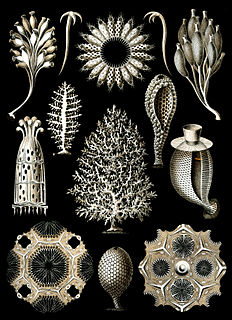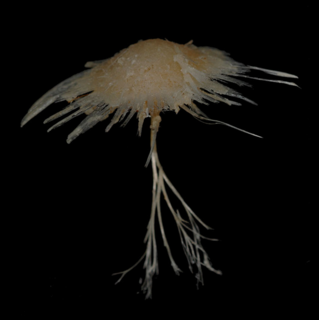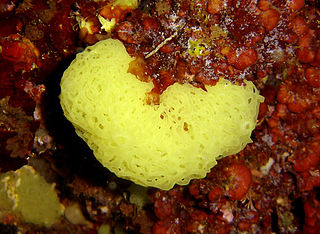| Levinellidae | |
|---|---|
| Scientific classification | |
| Kingdom: | Animalia |
| Phylum: | Porifera |
| Class: | Calcarea |
| Order: | Clathrinida |
| Family: | Levinellidae Borojevic & Boury-Esnault, 1986 |
| Genera | |
See text | |
Levinellidae is a family of calcareous sponges in the order Clathrinida. It contains the following genera and species: [1]
Family is one of the eight major hierarchical taxonomic ranks in Linnaean taxonomy; it is classified between order and genus. A family may be divided into subfamilies, which are intermediate ranks between the ranks of family and genus. The official family names are Latin in origin; however, popular names are often used: for example, walnut trees and hickory trees belong to the family Juglandaceae, but that family is commonly referred to as being the "walnut family".

The calcareous sponges of class Calcarea are members of the animal phylum Porifera, the cellular sponges. They are characterized by spicules made out of calcium carbonate in the form of calcite or aragonite. While the spicules in most species have three points, in some species they have either two or four points.

The Clathrinida are an order of calcareous sponges found in marine environments. These sponges have an asconoid structure and lack a true dermal membrane or cortex. The spongocoel is lined with choanocytes.
- Genus Burtonulla Borojevic & Boury-Esnault, 1986
- Burtonulla sibogae Borojevic & Boury-Esnault, 1986
- Genus Levinella Borojevic & Boury-Esnault, 1986
- Levinella prolifera (Dendy, 1913)
- Levinella thalassae Borojevic & Boury-Esnault, 1986
- Genus Sycettaga Haeckel, 1872
- Sycettaga primitiva Haeckel, 1872



